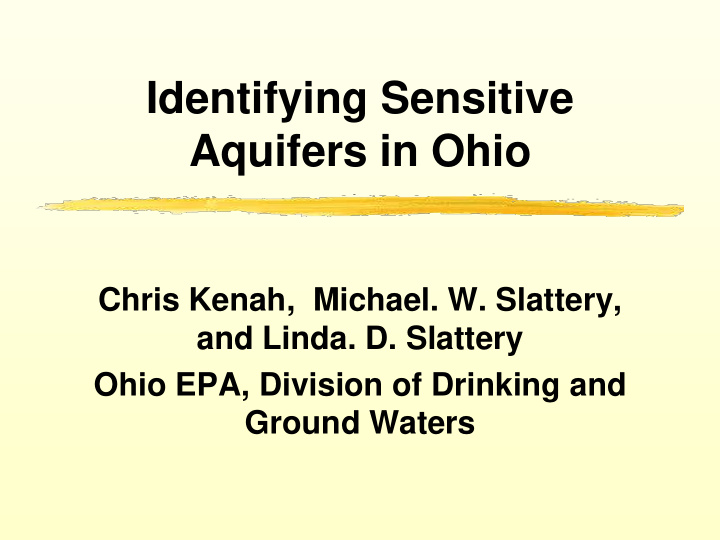



Identifying Sensitive Aquifers in Ohio Chris Kenah, Michael. W. Slattery, and Linda. D. Slattery Ohio EPA, Division of Drinking and Ground Waters
Benefits of Identifying Sensitive Aquifers • Ground Water Rule – Karst, Fractured Bedrock, Cobbles • Ground Water - Surface Water Interaction • Ground Water Protection Programs • Miscellaneous
Sensitive Aquifer Map - Data Sources • Compliance and Ambient Data – Nitrate, VOC, SOC • Regulated Facility Data – Landfills, Hazardous Waste Sites • Geologic Information – ODNR Aquifer Maps • Special Study Knowledge
Nitrate/Nitrite - Depth Relations in Ambient Wells Well Depth below Land Surface (feet) 100 200 sand and gravel aquifers 300 sandstone aquifers carbonate aquifers 400 0 5 10 15 Nitrate-Nitrite concentration (mg/L)
Sensitive Aquifers • Buried Valleys – Distribution of impacted sites confirms sensitivity of the sand and gravel aquifers filling glacial valleys: • Sensitive to nitrate, may not be sensitive to pathogens.
Sensitive Aquifers • Thin Drift Over Bedrock Aquifers – Impacted bedrock wells are more common in areas of thin glacial drift. • Holds true for non-point sources more than point sources?
Ongoing Efforts • Apply GPS locations; • Statistical analysis of sites and geologic settings/thickness; • Incorporate well depth into analysis; • Incorporate special study knowledge.
Acknowledgments • Data : • OEPA District Staff • OEPA Central Office Staff • ODNR Division of Water GIS Support : • DDAGW GIS Unit
Recommend
More recommend